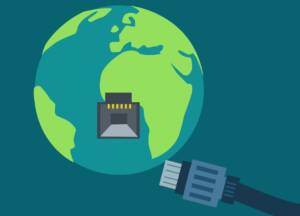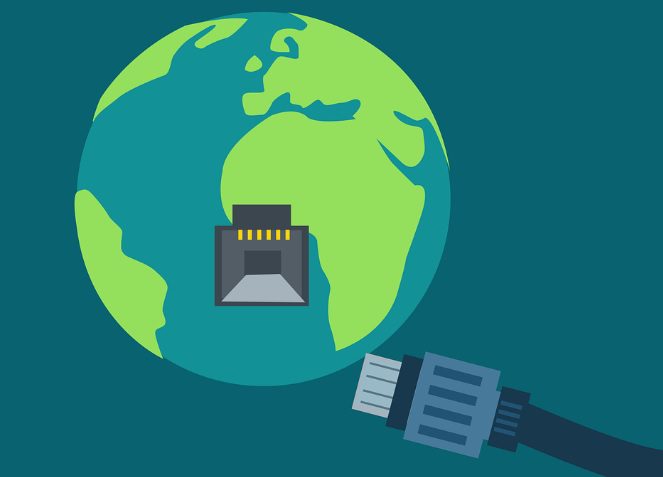Computer network technology is now well known by the general public. Evolution is endless, from the simplest to the most complex. Ethernet is such a useful technology that its uses vary too. For personal or business reasons.

There are also many types of networks, for local areas there is a LAN and one of them is Ethernet. You should know what it means to be Ethernet as the next generation of LAN cables.
What is Ethernet?
Of course, if you are familiar with computer networking, you already know what Ethernet is. Ethernet is a network that is included in the Local Area Network (LAN) category. Communication systems built with Ethernet divide the data stream into frames. In each frame, there is a destination address and a data source. In addition, the frame also has a data verification system so that if there is damage or error it can be sent back.
Ethernet can be understood as a type of communication protocol that helps connect computers in LAN and WAN networks. With an Ethernet network operating system, which is a type of LAN, it allows each computer to compete for access to the network. However, Ethernet networks are now the most populer type of LAN. This is because the Ethernet network is easy to install and the cost is very cheap.
History of Ethernet: Populer Beginnings
The history of Ethernet began when Robert Metcalfe and David Boggs discovered Ethernet technology on the first LANs in the mid-1970s. This technology was developed by Robert Metcalfe at the Xerox Corporation’s Palo Alto Research Center.
Initially, Harvard University graduate Bob Metcalfe worked for the ARPANET at MIT and ALOHANET while doing extensive research on random access protocols. After completing his doctoral studies, he started working at the Xerox Palo Alto Research Center (Xerox PARC). There he noticed Alto’s computer equipment. He realized the need for an affordable computer network.
This idea was first documented in a memo on May 22, 1973 by Robert Metcalfe. This is why Robert Metcalfe started research on Ethernet in 1972 and published it in 1973.
History of Ethernet: Its Development and Evolution
Ethernet became one of the most populer LANs in 1980. Later, Ethernet managed to change the status of other LANs until it was standardized in 1985 and was called IEEE 802.3. Ethernet initially operates at 2.94 Mbps and connects to 256 servers one kilometer apart. This result made them the first Xerox PARC researchers to communicate with computers. AltoMetcalfe developed this Ethernet technology by establishing their own company called 3Com. 3Com developed the marketing Ethernet card (Ethernet Card) for IBM computers in the early 1980s. However, in 1990, Metcalfe left 3Com, the company he had worked so hard to build.
The evolution of Ethernet itself consists of 4 generations, namely:
- Ethernet standard
The ancient history of Ethernet involves the Ethernet standard with speeds of up to 10 Mbps. LAN is an example of using this type of network. Usually, the number of computers connected to this type of network tends to be relatively small and relatively close together. Perfect for small homes or offices that just need a smaller, less expansive reach. - FastEthernet
Fast Ethernet has speeds of up to 100 Mbps. LAN is an example of using this type of network. 100Mbps itself is the data transfer speed, while the data input speed is always 10Mbps. - GigabitEthernet
Gigabit Ethernet has speeds of up to 1000 Mbps or the equivalent of 1Gbps. This technology became populer in 1998, and is still growing until now reaching speeds of 10Gbps. Suitable for buildings or offices that just need a wider and wider reach. - Ten-gigabit ethernet
Speeds up to 10,000 Mbit/s or 10 Gbit/s. This standard has not been widely adopted.
Ethernet function
It’s important to know Ethernet, but it’s better if you understand what it does. Of course, you will need an Ethernet controller or Ethernet card, which is the basis for building a LAN network.
What is an Ethernet controller? Ethernet controller or Ethernet card is a device that functions to transfer files and data through a computer network.
Computers are connected to a network and communicate with each other by physical access to the network media. The system used for Ethernet also includes low-level addressing. The MAC address used is also the only 48 bit found on the Ethernet card ROM. So in the network you can be sure that each computer has a unique MAC address card.
An Ethernet cable is used to create an Internet connection. The devices are connected to a local network, which is connected to the Ethernet ports of various devices. For a local network used by a specific organization, e.g. B. corporate office, school campus and hospital. Ethernet is characterized by high speed, security and reliability. Ethernet cables are typically used to connect a wireless router or modem to an Internet port or telephone line.
How Ethernet Works
The Ethernet protocol uses a star or linear bus topology, which is the basis of the IEEE 802.3 standard. In the OSI network structure, this protocol operates at the physical layer and data link layer, the first two layers. Ethernet divides the data link layer into two separate layers: a logical link control layer and a MAC (Medium Access Control) layer.
The data link layer in a network system is primarily concerned with transmitting data packets from one node to another. Ethernet uses an access mechanism called CSMA/CD (Carrier Sense Multiple Access/Collision Detection) to allow individual computers to connect before sending data across the network.
Ethernet also transmits data using two components, packets and frames. The frame contains payload data to be sent as well as the MAC and physical addresses of the sender and receiver, error correction data to identify transmission errors, and VLAN tagging (VLAN) and quality information. service (QoS). Each frame is encapsulated in a packet containing a few bytes of data to manage the connection and define the frame’s starting point.
Main Components of an Ethernet Connection
-
- Ethernet Protocol
Xerox developed this protocol in the 1970’s. It is a set of standards governing the transmission of data between Ethernet components as previously described. - Ethernet ports
An Ethernet port (often called a jack) is a hole in a computer network infrastructure where an Ethernet cable can be connected. It supports cables with RJ-45 connectors. The Ethernet port on most computers is used to connect peripherals with a wired connection. The computer’s Ethernet port connects to an Ethernet network card, also known as an Ethernet card, installed on the motherboard. Routers can include multiple Ethernet ports to support wired network devices. - Ethernet network adapter
An Ethernet adapter is a chip or card that fits into a slot on the motherboard and connects a computer to a local area network (LAN). Previously, it was always used with desktop computers. Ethernet is now integrated into laptop and desktop motherboard chipsets. - Ethernet cable
Ethernet cables, commonly known as network cables, connect a computer/PC to a modem, router or network switch. Ethernet cables include RJ45 connectors, internal cables, and plastic sheaths.
- Ethernet Protocol
Advantages of Ethernet
-
- High speed
Ethernet is a high-speed computer network technology. In addition, Ethernet is also the first computer network technology that allows network administrators to operate it easily. - Easier and cheaper
Compared to other computer network technologies such as Token Ring, FDDI and ATM which are more complex and expensive, Ethernet technology is simpler and cheaper. - More adaptive
Compared to other computer network technologies, Ethernet technology continues to evolve to accommodate new technological developments with faster data flows. - Low cost
Ethernet hardware such as adapters and switches are low cost products.
- High speed
Lack of Ethernet
-
- Possible data conflicts when using it.
- Enabled for small and short networks.
- Using a longer cable can cause crosstalk.
- Speed will decrease as traffic increases.




